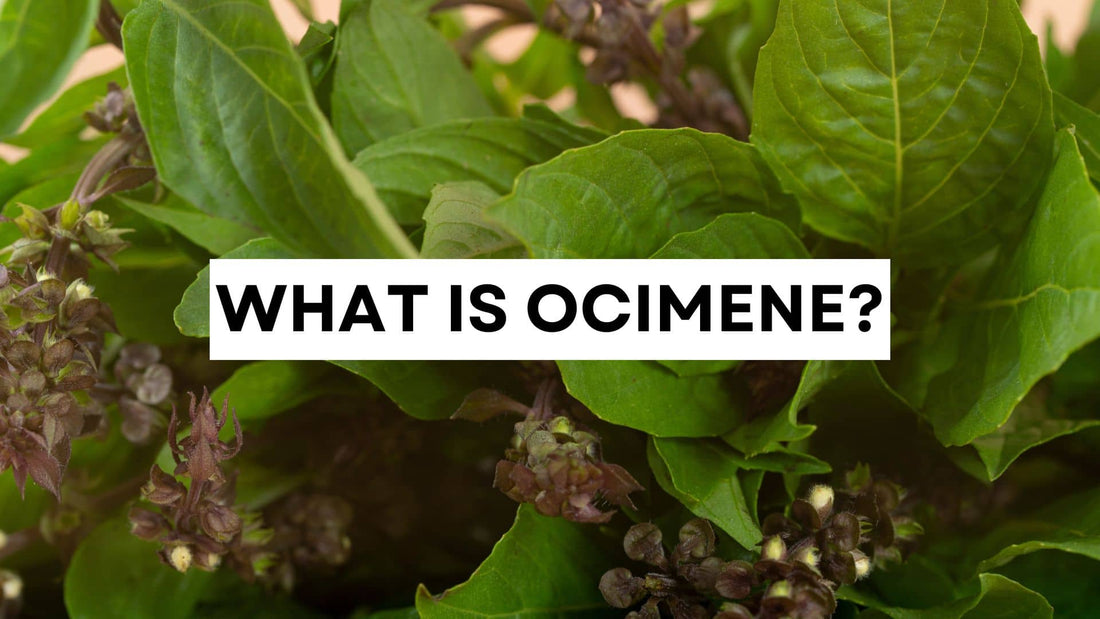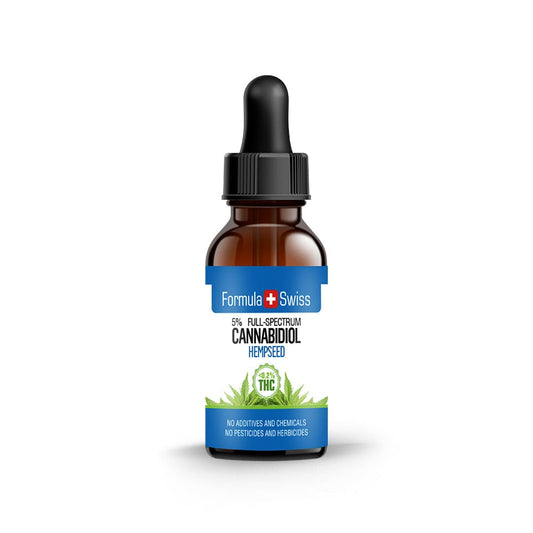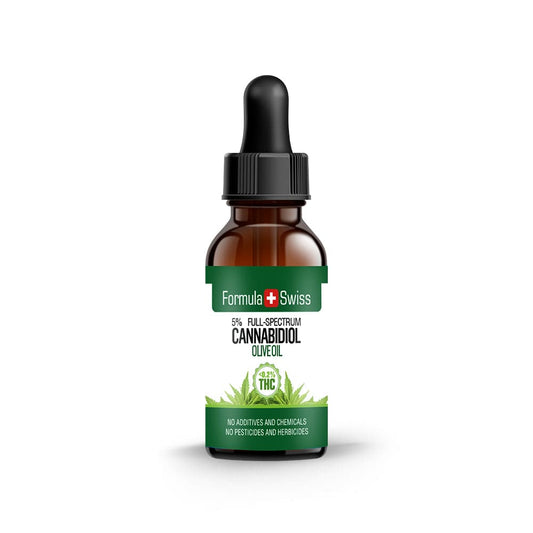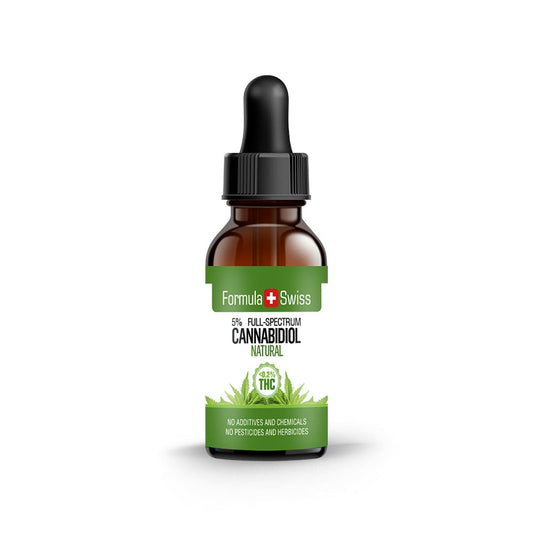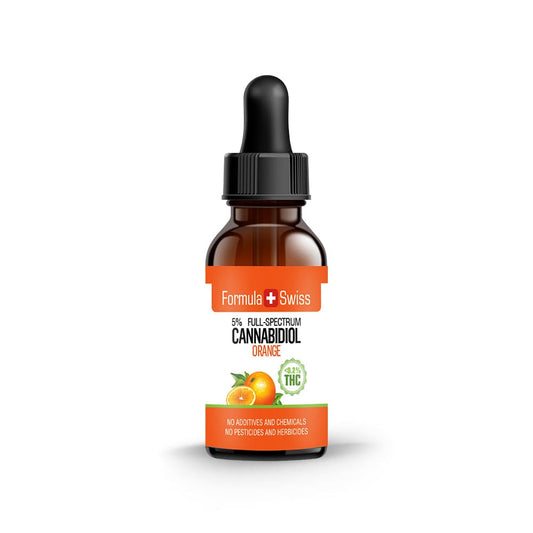Terpenes have always been one of the more fascinating parts of the cannabis plant for me. These aromatic compounds are what give each strain its own personality, and one that I keep coming back to is ocimene. You’ll find it in a range of plants, but in cannabis, it tends to bring something special.
Over the past ten years, working with hemp and cannabis—from growing to formulation—I’ve spent a lot of time getting to know these compounds, and ocimene has a way of standing out.
It’s got this sweet, herbal, slightly woody scent that’s hard to miss once you know it. But it’s not just about the smell—ocimene plays a quiet but important role in how a strain is experienced and understood, especially by those of us working closely with the plant.
In this article, I want to explore why ocimene deserves more attention and what makes it such a valuable part of the cannabis profile.
Save up to 30% when you order your CBD oil today
Key takeaways
- Ocimene is a terpene known for its sweet, herbal aroma with woody tones unique to the cannabis plant.
- It holds a vital role in the terpene profile, adding depth and impacting the overall scent of a strain.
- Ocimene's synergy with other terpenes such as myrcene and limonene plays into the dynamic effects of cannabis.
- Aside from its aromatic qualities, ocimene also serves as a natural protective agent against pests in plants.
- The entourage effect of cannabis is partly attributed to the complex interplay of compounds like ocimene.
- Understanding ocimene's impact on cannabis can elevate one's appreciation for the plant's chemical complexity.
This article is provided for informational purposes only and does not relate to any of the products available in our webshop. For more information, please see our full disclaimer.
The aromatic world of terpenes in cannabis
Exploring terpenes in cannabis reveals a world of aromatic diversity. Each terpene contributes to the plant's distinctive scent and overall character. Understanding these compounds enhances our appreciation of cannabis's complexity.
Terpenes are located in cannabis trichomes, alongside compounds such as THC and CBD. They are responsible for the plant's wide range of fragrances. However, their role goes beyond scent—they influence the overall plant experience.

Different cannabis strains feature unique terpene profiles. These profiles are influenced by genetics, climate, and cultivation methods, resulting in varied aromatic and sensory characteristics.
Exploring cannabis terpenes highlights the plant's rich sensory appeal. It remains a subject of interest for researchers and enthusiasts who appreciate the intricate world of botanical compounds.
Ocimene: The sweet herbal terpene in cannabis
Ocimene is key to a great cannabis experience. It has a sweet, herbal smell that changes the flavour profile of cannabis. This terpene adds a light, sweet touch to stronger flavours.
Ocimene makes cannabis taste better by adding subtle spicy notes. It makes the aroma richer and more complex. Even though it's not as common as myrcene or limonene, ocimene brings a unique, uplifting aroma.
| Terpene | Flavour notes | Effects |
|---|---|---|
| Ocimene | Sweet, herbal, spicy | Energising, uplifting |
| Myrcene | Earthy, musky | Relaxing, sedative |
| Limonene | Citrus, sharp | Stress-relieving, mood-enhancing |
Knowing about ocimene can make you enjoy cannabis more. It shows how important terpenes are in shaping the flavour and experience of cannabis. Ocimene's role in creating the unique character of cannabis strains is vital.
Ocimene’s role in plant defence
Beyond its pleasant, sweet aroma, ocimene also serves an important ecological function: it helps protect plants from potential threats.
Research published in the journal Plant Physiology describes how β-ocimene, a volatile compound released by plants in response to herbivore attack, plays a key role in priming defence responses in nearby plants, enhancing their resistance to future stress through epigenetic mechanisms.

This terpene has been observed to act as a deterrent to certain insects and herbivores, making the plant less attractive to potential pests.
In some cases, ocimene may function as a multifunctional signalling molecule, alerting nearby plants to activate defence mechanisms or attracting predatory insects that target herbivorous pests, as described in research published in the journal Molecules.
In cannabis, ocimene contributes to this built-in protective strategy, highlighting how terpenes do more than just influence aroma—they also support the plant’s survival and resilience in its natural environment.
Order and get up to 30% off your CBD oil
Fascinating sources of ocimene beyond cannabis
Ocimene is not exclusive to cannabis; it occurs widely across various plants and herbs, each contributing uniquely to its aroma and potential uses.
Research published in the journal Metabolites identified trans-β-ocimene as a key aromatic compound in basil (Ocimum species), contributing to its distinctive fresh and herbaceous fragrance.
While the study focuses on basil, ocimene is also commonly found in other aromatic plants like mint and parsley, as well as in citrus fruits such as oranges and grapefruits, where it enhances their bright, uplifting scent profiles.
Notable sources of ocimene:
- Basil and mint
- Citrus fruits (e.g., oranges, grapefruits)
- Orchids
- Mangoes
Additionally, this terpene appears prominently in orchids, where it plays a critical role in attracting pollinators through its sweet, floral aroma. Interestingly, ocimene is present in mangoes, contributing subtly to their tropical fragrance and flavour.

Understanding these diverse natural sources underscores ocimene's widespread influence beyond cannabis, highlighting its significance in perfumery, culinary arts, and aromatherapy.
Order CBD oil now and save as much as 30%
How ocimene contributes to the entourage effect
In exploring the entourage effect in cannabis, it's important to examine ocimene's role in more detail. A study published in the journal Scientific Reports provides experimental evidence supporting the entourage effect, demonstrating interactions between cannabinoids and specific terpenes.
The research indicated that terpenes could influence cannabinoid activity, suggesting these compounds might interact in a way that shapes the overall profile of a product.
Understanding the interaction of cannabinoids and terpenes in the entourage effect helps clarify why certain cannabis varieties might exhibit distinct aromatic characteristics. For instance, varieties rich in ocimene are often associated with clearer or more relaxing aromatic impressions.
This might be attributed to ocimene's interaction with other active compounds. Exploring how ocimene and similar compounds affect the entourage effect allows individuals to make informed choices, selecting cannabis products that align with their preferences and desired aromatic qualities.
Identifying ocimene in cannabis strains
Exploring cannabis has become more exciting with the discovery of ocimene-rich strains. These strains offer unique sweet and herbal flavours. Terpene profiles from lab tests help us understand these flavours better.
Looking into ocimene-rich strains is not just about taste. It's about enjoying the complex mix of terpenes. These terpenes create different effects and smells. Lab tests are key to exploring these differences.

Popular cannabis strains high in ocimene
Some strains are known for their high ocimene levels. They offer a refreshing and soothing scent. Cannabis lab testing is important for those seeking information about ocimene. Labs confirm and measure ocimene levels. This supports more informed decisions when selecting specific strains.
| Strain | Profile | Ocimene level |
|---|---|---|
| Golden Goat | Tropical, sweet | High |
| Clementine | Citrusy, fresh | High |
| Jack Herer | Woody, spicy | Moderate-High |
| Strawberry Cough | Fruity, berry | Moderate |
| Green Crack | Citrus, earthy | Moderate-High |
| Space Queen | Sweet, tropical | High |
| Dutch Treat | Pine, eucalyptus | Moderate |
Understanding terpene profiles through lab analysis highlights the diversity of aromatic characteristics found in different strains. Elevated levels of ocimene may influence how these aromatic properties are perceived.
Comparing ocimene with other terpenes
Exploring terpenes reveals interesting contrasts, such as ocimene versus limonene and ocimene versus myrcene. Each terpene contributes uniquely to the aromatic profile of cannabis. Let’s examine how ocimene’s sweet herbal notes compare with those of other terpenes.
Ocimene is often associated with fresh, herbal, and citrus-like aromas. Limonene, known for its sharp citrus scent, tends to impart a bright, zesty character. When present together, they may enhance the overall aromatic complexity of specific cannabis profiles.

In contrast, myrcene typically brings a deeper, musky and earthy aroma. The interplay between ocimene’s fresher tones and myrcene’s grounding scent can result in a more layered fragrance experience.
Recognising how terpenes interact can support a deeper appreciation of cannabis varieties. Their combinations influence how aromas are perceived and may guide choices based on preferred sensory qualities.
In summary, the presence of ocimene, limonene, and myrcene highlights the diverse range of aromatic features found in cannabis. Studying these terpenes offers valuable insight into what shapes each product’s scent profile.
Cannabis experience with ocimene
As an enthusiast of cannabis aromas, I've noticed how different terpenes can significantly influence the overall experience. Ocimene stands out due to its role in enhancing the aromatic qualities of certain strains.
By focusing on thoughtful strain selection, it’s possible to identify those noted for ocimene’s sweet, herbal scent. This adds an extra layer of sensory appeal.
Ocimene’s presence often contributes to what some describe as a more vibrant aromatic profile. It can enhance the perception of freshness and complexity, which plays a part in creating more tailored cannabis experiences.

For individuals seeking nuanced scents, ocimene’s fruity character can enrich the encounter. It's a matter of aligning personal preferences with what’s available. Gaining a deeper understanding of terpenes like ocimene marks an important step for those interested in aromatic characteristics.
Naturally present in herbs like mint and parsley, ocimene is also prominent in well-known strains such as Amnesia Haze and Strawberry Cough. Recognising where ocimene occurs can help refine selection choices based on aromatic interest.
Personal perspective
Working closely with hemp over the years, I’ve come to really appreciate just how much terpenes bring to the table, especially ocimene. It’s one of those compounds that often flies under the radar, but its sweet, herbal scent and presence in certain strains make a big impact.
I’ve seen firsthand how ocimene shapes the aroma profile of different cultivars, and it’s a big part of what gives some varieties their unique character.
Digging into terpenes like ocimene has deepened my respect for how complex the plant really is, not just in terms of cannabinoids, but the full spectrum of natural compounds it produces.
It’s helped my team and me fine-tune how we approach extraction and formulation. There’s something really satisfying about working with these subtle elements and seeing how they contribute to both product quality and innovation. Ocimene is a great reminder of how much is still worth exploring.
Don’t miss out—save up to 30% when you purchase CBD oil today
Frequently asked questions
What exactly is ocimene and what role does it play in cannabis?
Ocimene is a terpene known for its sweet, herbal scent, occasionally with woody undertones. It contributes to the aromatic profile of cannabis and is considered one of several compounds that influence the overall sensory experience.
Can you describe the role of terpenes in cannabis?
Terpenes are responsible for the distinctive aromas and flavours associated with different cannabis varieties. They also interact with other plant compounds in ways that may shape the perceived characteristics of a given strain.
How does ocimene's aroma compare to other terpenes in cannabis?
Ocimene has a crisp, sweet, and herbal fragrance. It contrasts with the musky and earthy tones of myrcene and the bright, citrus-driven profile of limonene. Ocimene lends a fresh, floral dimension to the overall scent.
Where else can you find ocimene in nature?
Ocimene naturally occurs in plants such as mint, parsley, orchids, and citrus fruits. Its pleasant aroma makes it a popular choice in perfumery and fragrance production.
How does ocimene contribute to the cannabis entourage effect?
Ocimene interacts with other terpenes and plant compounds as part of a broader synergistic phenomenon often referred to as the entourage effect. This interplay may influence the overall aromatic complexity and perception of the strain.
What popular cannabis strains are known to be high in ocimene?
Strains such as Dutch Treat and Golden Goat are often noted for higher levels of ocimene, which contributes to their sweet and herbal scent profiles.
How can users verify the ocimene content in cannabis strains?
Laboratory analysis can provide detailed terpene profiles for cannabis strains, including the presence and concentration of ocimene. This information can guide selections based on aromatic preference.
How does ocimene compare and contrast with limonene and myrcene?
Ocimene has a light, herbal fragrance. Limonene offers a citrus-driven scent, while myrcene tends to be more earthy and musky. Each terpene plays a distinct role in shaping the olfactory identity of a strain.
In what way does ocimene interact with other terpenes?
Ocimene can amplify or soften the aromatic expression of other terpenes. This interaction contributes to the nuanced and complex aromatic profile found in many cannabis varieties.
How can ocimene enhance aromatic experiences with cannabis?
Selecting strains that feature notable levels of ocimene can alter the fragrance and perceived complexity of a product. This supports the creation of tailored aromatic profiles that match individual preferences.

